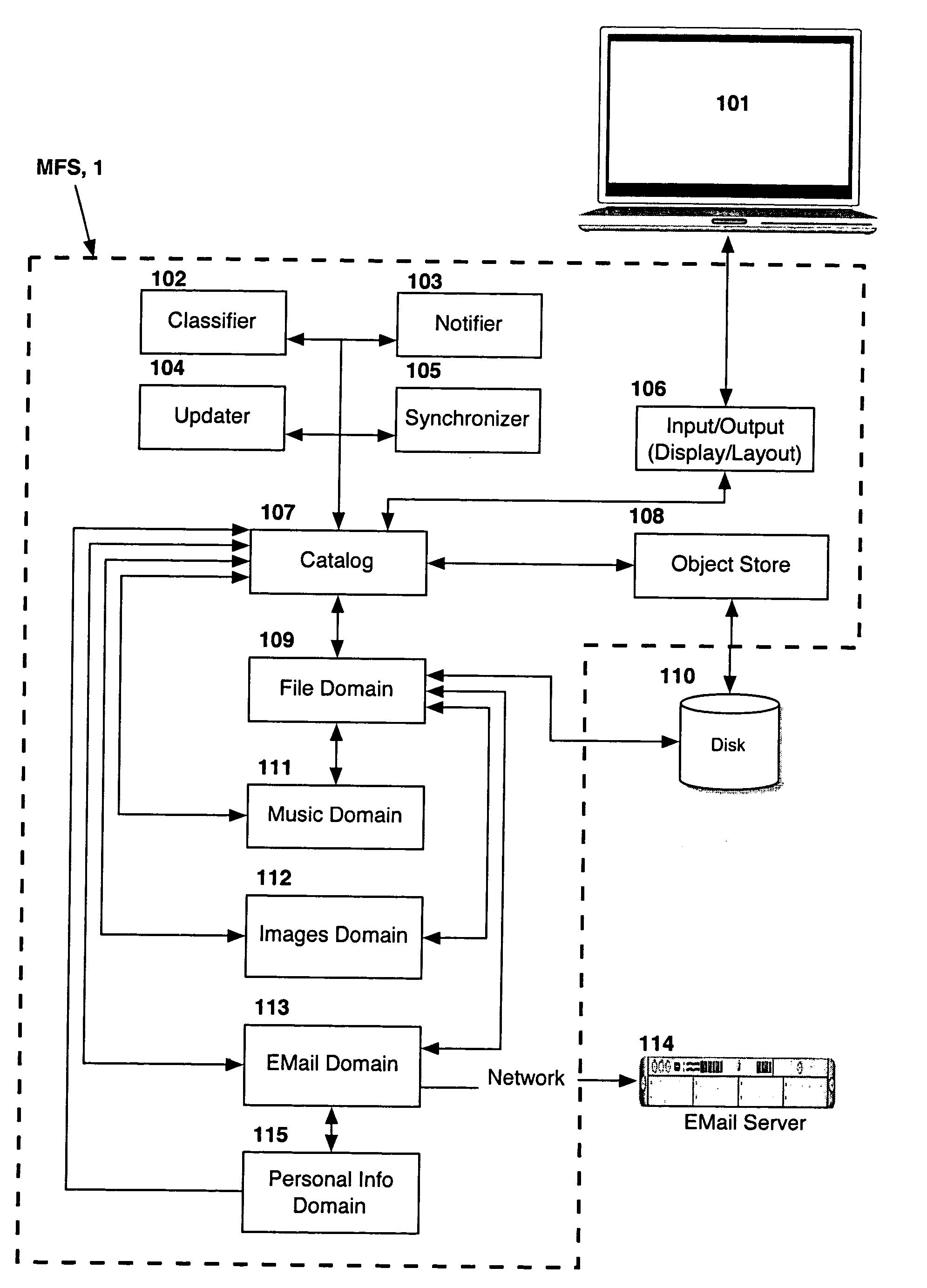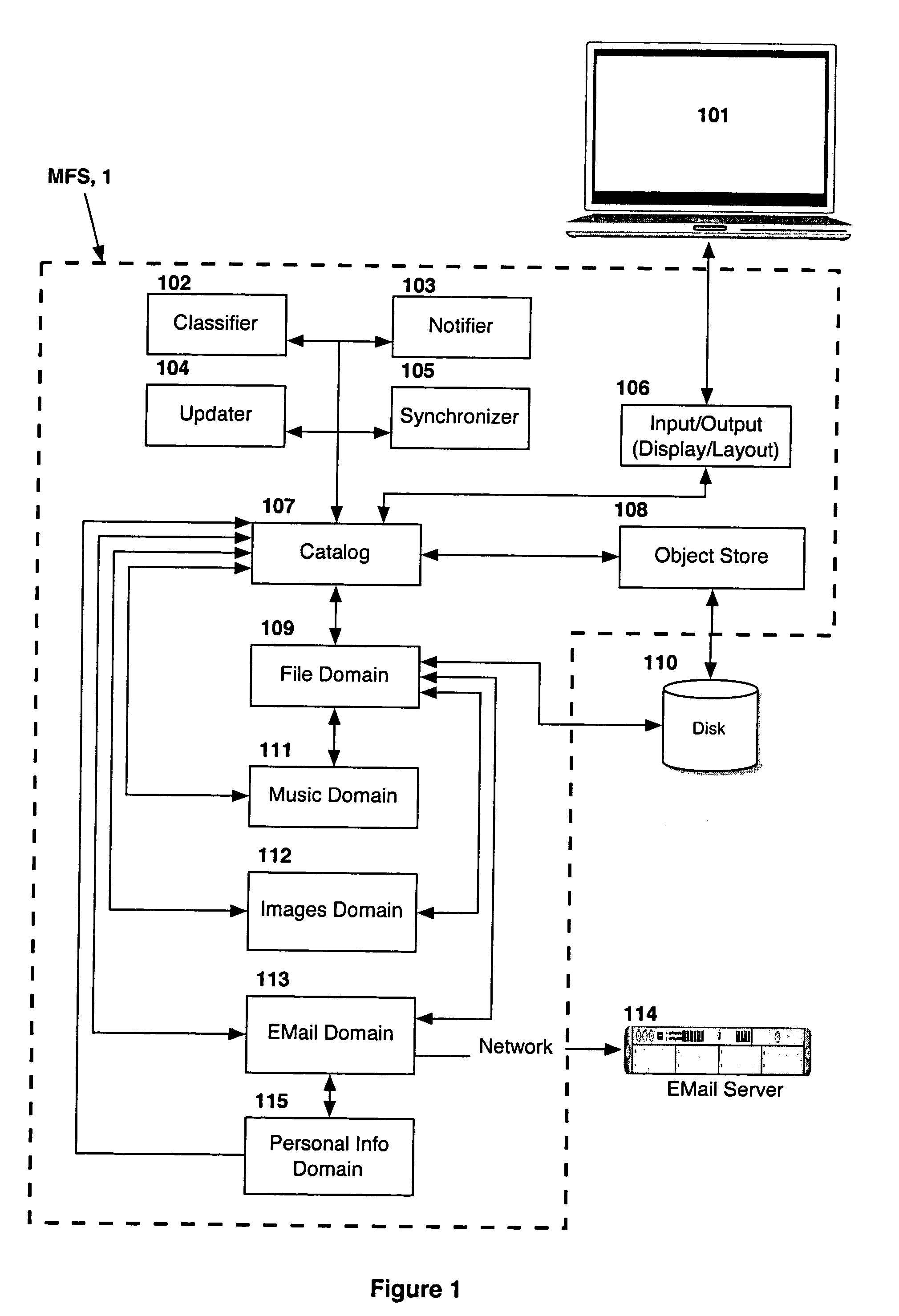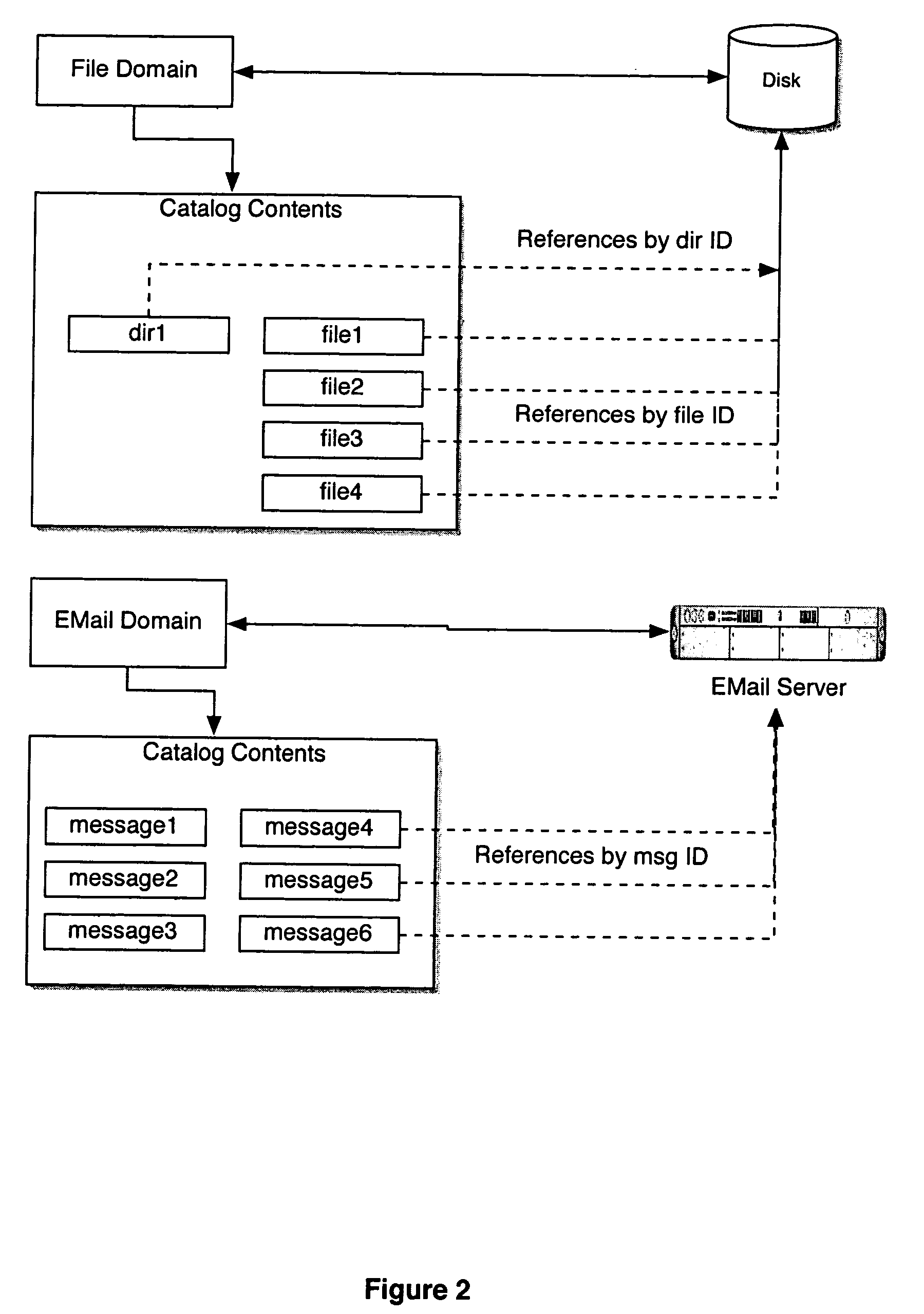[0038]The inventive MFS computer data processing system for automatic organization, indexing and viewing of information objects from multiple sources is characterized by: at least one central processing unit configured with client operating system and applications software; (and / or in the case of Internet operations the MFS system is configured with server software to host a site on the Internet including the serving of both static, generally informational Web pages, and dynamic Web pages, of information to individuals including information that may be generated on the fly in response to individual requests, routers and interfaces including at least one client and / or network interface to at least one network data communication device for exchange of data among computers, routers and input devices); and peripheral input and output devices linked to said client / server central processing unit in an architecture so as to provide client and / or site operation and functionality; said central processor unit includes at least one memory coupled to a bus; said memory including selected program structures stored therein, including an operating system program structure, at least one client and / or server system management program structure, at least one hierarchical data storage management system program structure, and selected application program code structures including the novel MFS code structure described herein; said central processing unit reading data input so as to implement system functionality selected from operational, computational, archival, sorting, screening, classification, formatting, rendering, printing and communication functions and processes; and data record structures selectably configurable in object, metadata, relational or hierarchical databases and which data records are selectably associatable, correlatable and callable; said central processing unit reading from user, network or Internet server input devices data relating to objects received by, created by or selected by individual users, and processing such data in said central processing unit so as to generate and manage informational objects by special metadata linking to reference objects created, received or selected and / or input by users, and so as to provide information management tools that facilitate communication to generate, transmit and receive, archive, search, order, retrieve and render objects, including information organization personalized for each individual user based on preferences selected by the user.
[0045]From the perspective of process, or method of operation of the MFS-configured computer system the CPU is caused to process as follows (by reference to an “external object” is meant an object outside MFS, although it can be one created by the client computer system or could be an incoming foreign object, that is, one sent from a distant server). When an external object is to be managed by MFS (whether incoming or locally created), MFS creates an internal representation of the object and stores the representation in the MFS object oriented database (OODB), called the object store, which assigns an internal unique identifier (UID), upon which it is termed the “reference object” (RO). The RO is simultaneously scanned and metadata is created (including a desktop icon) and / or extracted, and this metadata is associated (bit strings added to the object data) with the reference object. Only this metadata (including unique reference information for finding the external object, called the universally-unique ID, or UUID) is stored in the catalog database, not the entire external object itself This process is “mirroring”, with the reference object identified within the system by internal UID, and the association properties metadata being the “image” (or “virtual image”) in the catalog. The system, as metadata are created upon selection or creation of collections or containers, “reflects” the reference object in them through tagging additional “path” and “hierarchy” link metadata to the properties metadata that is automatically associated with the reference object and stored in the catalog. Updates and changes to the reference objects also update the metadata in the catalog with the changes rippling throughout all the images in all collections instantly and simultaneously. User identification, selection, or creation of a collection writes the metadata for the selected object; dragging and dropping an object into a collection or container also auto-writes to the metadata, adding the relevant link. Searching the metadata, via automatic or user selected or created queries recalls the single reference object from the OODB, and if selected, the external object is retrieved from the external source (hard drive or other data storage), permitting a comprehensive desktop interface.
[0049]Drag-And-Drop Categorization: Another feature of the inventive MFS-configured computer system enables the user to organize all kinds of information, not merely simple files, through a drag-and-drop windows-and-icons software functionality, making it easy to organize objects and cross-reference them from place to place using a desktop-style interface. That is, clicking on the icon or list reference to an object in one collection window and dragging it into another collection window establishes a new link; the object is now accessible from both collections. And, rather than being duplicated in an object database, only the link metadata is placed in the catalog, with that catalog being updated for retrieval of the reference object from either collection. This drag-and-drop linkage creation without duplication is an extremely powerful function of the inventive application program.
[0055]Consistency Maintenance: Another function of the inventive MFS-configured system keeps all object relationships up to date automatically, so that any changes in the user's information space (e.g., desktop) results in timely and appropriate changes to any object views.
[0057]Extensible Domains: Another function of the inventive MFS-configured system provides a plug-in mechanism for other applications to take advantage of the features of the invention: MFS provides interfaces to permit one or more client applications to actively create new objects for, apply properties to, store, link, and classify the client application's information such that it may be viewed and collected in the same way as any other objects in the system. MFS provides the software functionality to dynamically restructure and link preexisting file systems, files, and databases in a way that is modular, scalable, and extensible.
 Login to View More
Login to View More  Login to View More
Login to View More 


